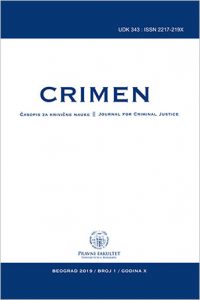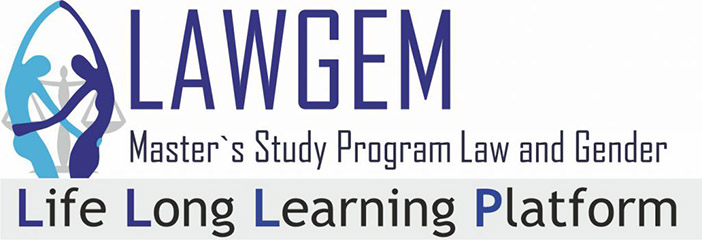 https://scindeks.ceon.rs/article.aspx?artid=2217-219X1903257L
https://scindeks.ceon.rs/article.aspx?artid=2217-219X1903257L
The paper theoretically and empirically analyzes girl’s crime and especially is oriented toward possible identifying of two distinct subgroups of girls offenders: aggressive and non aggressive. Considering that in criminological literature term aggression is not the same as the term violence, we decided to conduct two analyzes: comparison of aggressive and nonaggressive girls as well as comparison of violent and nonviolent. Violence is restricted in this analysis to violent criminal offences prescribed in the Criminal Code in Serbia (apart from crimes against life and limb, all other criminal offences with violent element are included such as domestic violence, violent behaviour, robbery etc.). Aggressive behaviour is wider concept and the divison on aggressive/non aggressive girls was made in accordance to assessment of social workers irrespective of crimes committed. The study is based on the sample of 59 juvenile girls and the data were obtained in four departments of the Center for Social Work in Belgrade for the period 2009-2019. We used chi-square test and binary regression (SPSS program) to evaluate relatedness between independent variables on three different levels (individual, family and social) and distinction based on aggression/violence of girls. First of all, we concluded that the classification of girls on aggressive and non aggressive is more relevant than classification on violent/nonviolent. On individual level only one independent variable was statistically significant and that was the age. Younger girls tend to commit more aggressive acts in comparison to non aggressive. On the family level following variables are of significant importance: psychopathology of fathers including alcohol and substance abuse, aggressive behavior and criminal conviction.
Furthermore, the number of stressful life events such as change of caregivers due to divorce, death or deprivation of parental rights explains why some girls behave aggressively. Also, parental disciplinary practice is of special importance considering that inadequate discipline of both parents influences the aggressive as well as the violent outcome in girls. Finally, experience of physical victimization in the family is a strong predictor for aggressive as well as for violent behaviour. The same is true for the family violence between parents. On the social level of analysis we tested two variables: the role of peers and school achievement. Both are important in prediction of aggression. If juvenile girls have peers prone to criminal activities it is more possible for them to behave aggressively. As for the school achievement we concluded that success in both elementary and high school influences girls to be aggressive or violent. As for the termination of education and expulsion relatedness does not exist.
Study has some limitations. Due to the relatively small sample it is necessary in future research to test the influence of analyzed variables. Also, we could not obtain data for other independent variables and this should be also done (for example in many files we could not determine the level of girl’s intelligence, depression, anxiety and conduct disorder). Furthermore, future research should try to make more detailed classification of girls offenders in order to differentiate between those who commit only aggressive acts, those who commit both aggressive and nonaggressive acts and those who are not aggressive at all. The last group needs to be classified into further subgroups with regard to crimes committed.

